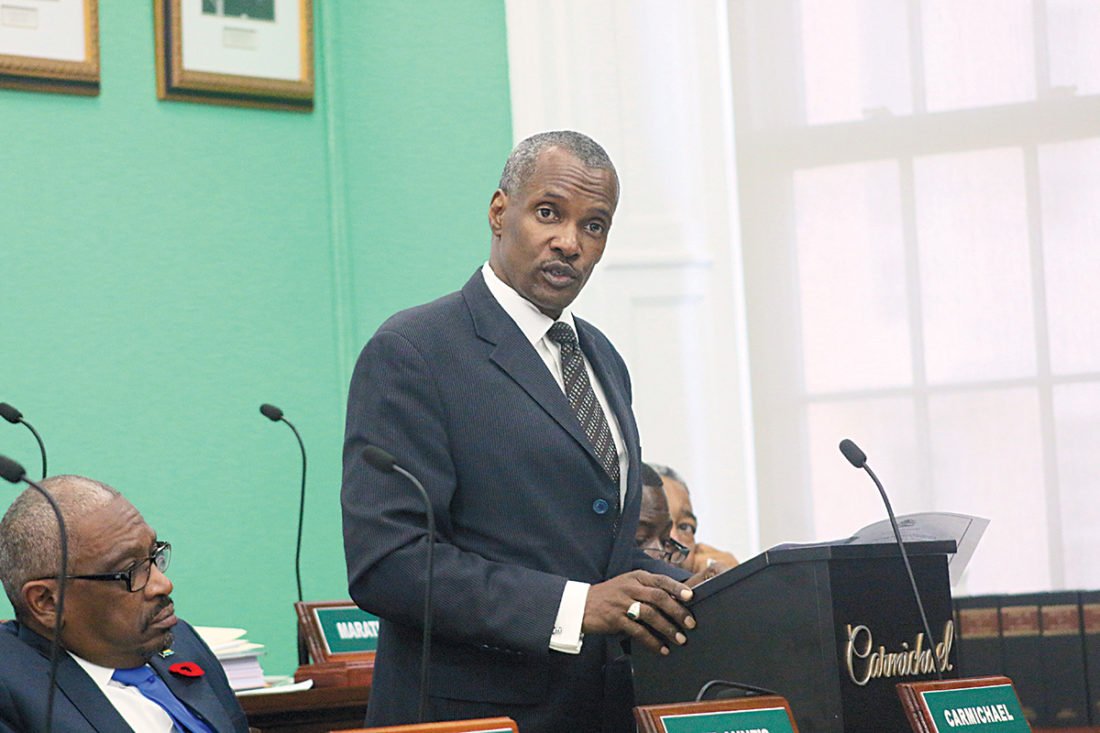Minister says BPL exploring renewable energy solutions
With mounting pressure from the public to reverse recent increases in power costs in The Bahamas, Minister of Public Works Desmond Bannister said yesterday that while all effort is being made to address Bahamas Power and Light’s (BPL) legacy challenges, consumers must employ energy-conserving measures in the interim.
“All of us have to conserve,” he told reporters following a tour of GoldWynn’s hotel-condo development on West Bay Street.
“All of us have to be more conscious about how we use energy.
“I think a lot of people, if they look at their bills — I look at mine. I look at energy use over this last month and quite frankly I’ve used up more energy than I have used in the last few months, so my bill had to be higher.
“These are the things that we all have to look at.
“We have to be fair and honest about that.”
Bannister encouraged consumers to engage BPL for energy audits.
The minister said he plans to meet with BPL board members on Monday to discuss other proposed cost-saving measures.
The fuel surcharge on BPL bills in October was up nearly 50 per cent year-on-year.
According to data provided by the power company, the average BPL was also up approximately 45 per cent between October 2017 and October 2018.
There were even greater increases observed throughout the Family Islands.
For example, the average bill in Mayaguana during the same period increased fivefold – from $271.51 to $114.50.
The average bill for residents in Bimini increased from $145.62 in October 2017 to $252.09 in October 2018 – an increase of 73 per cent.
The average bills in Inagua, Farmer’s Cay and Exuma also doubled in the same period.
Meanwhile, residents in Long Cay saw their average bills triple year-on-year.
BPL has over 93,000 customers throughout the country.
Bannister pointed out that a part of the reason for the high cost of electricity in New Providence is because customers of this island largely subsidize those in the Family Islands.
He said if Family Islanders were to pay their full share, the price could easily increase tenfold.
“That’s the reality,” the minister said.
“If you are paying 20 cents per kilowatt-hour here (New Providence), really when you look at some place like Mayaguana; when you look at some place like Crooked Island and when you look at all the Family Islands, except for Abaco, all those Family Islands are essentially being subsidized.
“You would not want to know the cost of providing energy to some of those Family Islands. That’s the reality.
“I understand the fact that their bills have gone up, but I also understand the fact that they are still not paying the cost of providing energy to those islands.”
Crisis
Bahamas Electrical Workers Union President Paul Maynard said this week that BPL should declare it is in “crisis mode” and call on its partner, Shell North America, to assist.
Bannister said there is no crisis mode, but any ideas presented by the union president that are within reason will be looked at.
BPL signed a memorandum of understanding (MOU) with Shell Gas and Power Development B.V. earlier this month for a liquefied natural gas power project, a move BPL expects will significantly reduce the cost of electricity.
According to the MOU, Shell would become an independent power provider and cover the cost of constructing the plant, which is expected to cost upwards of $100 million.
BPL will then pay Shell to provide electricity.
As part of that agreement, BPL will negotiate a power agreement with Shell.
According to officials, it will be a few years before the project comes to fruition.
Bannister said BPL is also receptive to proposals for renewable energy solutions.
He said a number of Bahamians have come forward and submitted proposals to BPL that extend beyond solar.
According to the minister, BPL will work with its regulator, the Utilities Regulation and Competition Authority, to see how quickly some of those proposals can be approved.






